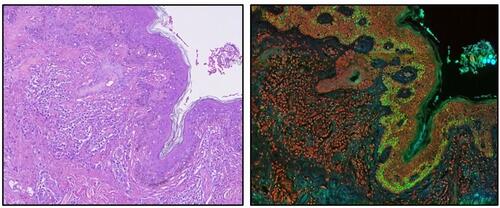Improved Microneedle Technology Speeds Up Extraction of Sample Interstitial Fluid for Disease Diagnosis
Posted on 19 Mar 2024
Interstitial fluid has many similarities with blood, and its secrets are still being uncovered. A microneedle offers a minimally invasive method to sample this fluid directly under the skin. This tool allows for real-time and continuous monitoring of biomarkers circulating in the body. Despite their small size, just two to three times the width of a human hair and around a millimeter in length, microneedles can make a significant difference in early infection diagnosis and personal health monitoring. Now, researchers have developed improved microneedle technology that enhances the extraction of interstitial fluid by collecting more sample quantities in less time.
Sandia National Laboratories (Albuquerque, NM, USA) is leading the way in microneedle research through collaboration with different partners to enhance this technology. Sandia has achieved a breakthrough in interstitial extraction, moving from using multiple needle arrays to a single microneedle technique that collects enough fluid for analysis in just about 10 minutes. This method is not only quicker but also gathers larger fluid volumes. The microneedles, designed to bypass nerve endings by not penetrating too deeply, are hollow and have been optimized by modifying the needle holders' shape, which are 3D printed at Sandia’s Advanced Materials Laboratory.

This advancement could broaden microneedle applications significantly. For example, Sandia is exploring using microneedles to differentiate between bacterial and viral infections. This distinction could enable faster, more precise treatments. Additionally, Sandia is investigating the biomarkers present in interstitial fluid to see how they correlate with blood measurements. This research involves collecting interstitial fluid from volunteers using the new method, with the aim of developing devices for continuous health monitoring. Moreover, Sandia is also working on another project to develop microneedle sensors that detect electrolytes like sodium, potassium, and calcium. Continuous monitoring of these electrolytes could assist in managing cardiovascular functions, hydration levels, and electrolyte imbalances, offering benefits similar to a wearable glucose meter for various health conditions.
“When we started work in this field in 2011, our goal was to develop microneedles as a wearable sensor, as an alternate to blood samples,” said Ronen Polsky, who has led Sandia’s work in microneedles. “People wear continuous glucose monitors for blood sugar measurements. We want to expand this to a whole range of other conditions to take advantage of this minimally invasive sampling using microneedles.”
Related Links:
Sandia National Laboratories













